Sub Ghz radios are expected to continue their dominance in the smart home device market for the foreseeable future, as they offer a compelling combination of performance, reliability, and cost-effectiveness.
Although standard wireless protocols like BLE and ZigBee are tried and tested, they might be vulnerable to security threats because they have publicly known message formats, signal modulation techniques, and data rates. Therefore, it is necessary to develop proprietary wireless protocols for sensitive IoT applications, such as smart home automation, smart offices, and business security systems.
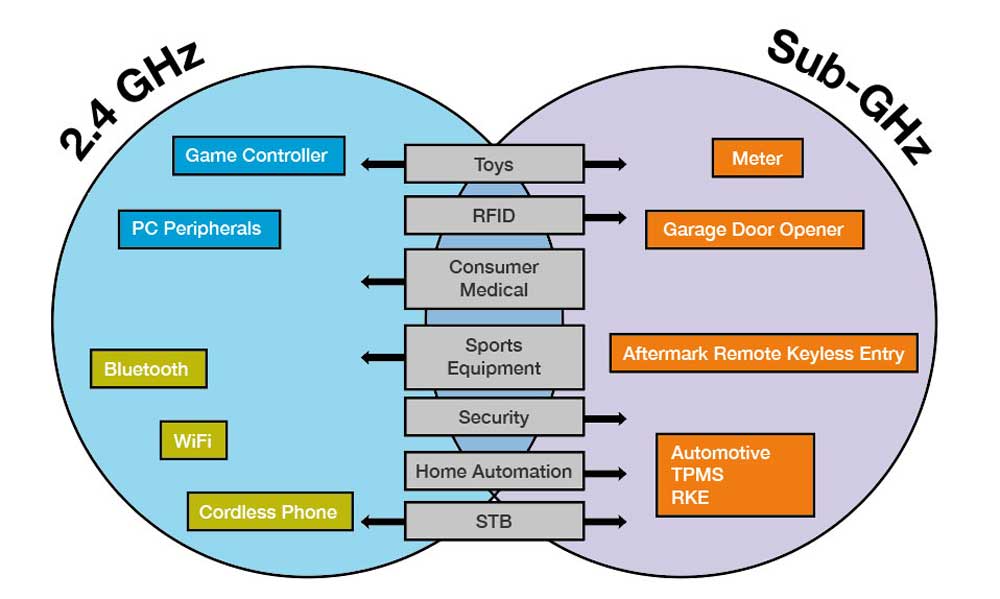
There are other pros of using Sub 1Ghz proprietary wireless network protocols. I’ll place these side by side against the cons/challenges to see which path is better for your IoT solutions. I’ll also show you how Roombanker can help you solve these challenges. Let’s get right into it!
Why Consider Sub-GHz Radios in the First Place?
Long Range
Sub-GHz protocols have a longer range than their GHz counterparts due to lower attenuation rates, better diffraction (bending), and superior propagation.
All radio waves weaken as they pass through obstacles like walls. But the attenuation rates for sub-GHz signals are lower than those of GHz waves when penetrating each obstacle, meaning they can penetrate more walls.
Radio waves also tend to bend when they hit solid edges, such as the corners of buildings. The lower sub-GHz signals have higher diffraction angles, which means they bend more around obstacles. This reduces the blocking effect, increasing the range.
Even when transmitting on a straight line with no obstacles, sub-GHz frequencies experience lower path losses, resulting in a longer transmission range. Generally, they reach at least 1 km, while GHz signals only go as far as a few hundred feet.

Minimal Interference
GHz signals, specifically the 2.4 GHz band, are crowded because protocols like BLE, WiFi, and ZigBee operate at this frequency. Since phones, peripherals, microwave ovens, and other devices that use these frequencies are many, there is a higher possibility of interference.
But sub-GHz protocols are mostly used for long-range, low-duty-cycle communication, so the airwaves are not as crowded because not many devices run them. Therefore, signal transmission is more reliable.

Low Power Consumption
Sub-GHz communication protocols transmit signals at low power levels while achieving the same link budgets. On top of that, the minimal interference in this band means there are fewer retries to transmit the data successfully, which conserves the energy from the battery.

Lower Cost
Batteries are expensive, and since most sub-GHz devices run on them, they are the highest-cost components in the design. But these sub-GHz protocols consume little power, so the hardware doesn’t need large, expensive batteries. Most end nodes run on cheap coin, AA, or AAA batteries, which lower their costs.
Requires Minimal Maintenance
Batteries in sub-GHz devices last for years if not decades. This minimizes maintenance costs and tasks associated with battery replacements during the product or IoT solution’s service life.
Why Develop Sub GHz Proprietary Wireless Communication Protocols?
Use Case Mismatch
The standard wireless communication protocols, including those in the sub-GHz range, might not fit your use case. Factors like insufficient throughput and limited end-node support can disqualify all protocols from your specific IoT solution, making it necessary to develop a proprietary solution.
Innate Security
Standard protocols are more vulnerable to attacks because their data rates, package structure, and signal modulation techniques are known. But with proprietary Sub GHz protocols, these properties are obscured, making it harder for intruders to crack the network.
Lower Power Consumption
When developing a proprietary protocol, you have total control over all the functions that can increase or decrease power consumption. So you can optimize processes and algorithms to reduce energy use further than what standard protocols offer.
Lower Cost
Standard wireless communication protocols are designed to serve a broad market, so they have multiple features that increase memory and processing requirements. But customizing a proprietary protocol to suit your use case eliminates the unnecessary features, which reduces the hardware requirements, allowing you to deploy leaner, cheaper hardware.
Device Compatibility
Developing a proprietary wireless communication protocol also boosts device compatibility because you’ll be dealing with a single provider, who will build vertically-integrated hardware.
For instance, if you partner with us at Roombanker to develop your home automation solutions running on proprietary networks, you can be sure that the smart hub, sensors, smart thermostats, smart plugs, wall switches, relays, etc., will all operate and interconnect seamlessly.
Resources for this part: https://www.silabs.com/support/training/sub-ghz-proprietary-and-connect-software-stack
Smart Home Applications Using Sub-GHz Devices
Energy Management
Energy management systems are designed to keep users updated about their home’s energy consumption using real-time data on when and where the energy is being used, historical reports, insights, and multi-scene integration.
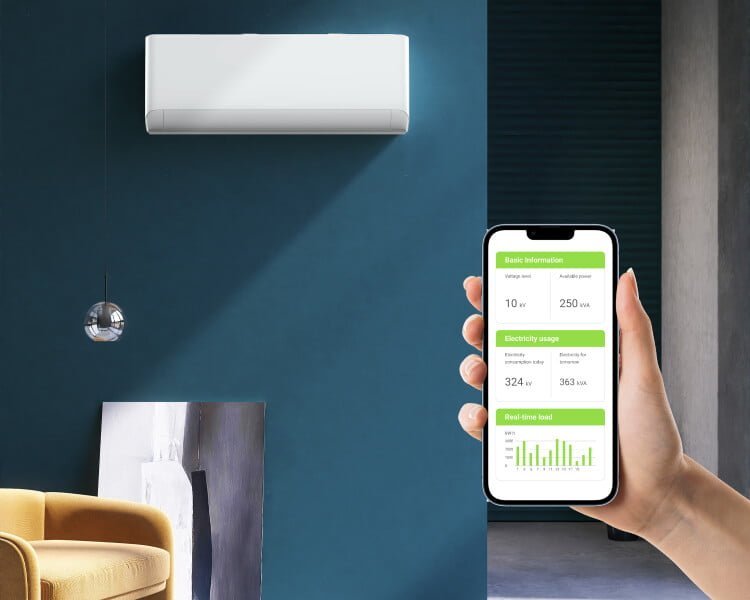
This application has three device categories.
- Hubs, such as this Roombanker home security hub. It is compatible with standard protocols like ZigBee and BLE, but it also supports our proprietary RBF protocol. The device can cover up to 64 rooms and connect up to 128 peripherals.
- Smart energy sensors, such as the single-phase and three-phase meters.
- Automation devices, which include smart wall switches and smart plugs.
Home Automation
Home automation enhances the comfort of the livable space by incorporating temperature and humidity monitors, automation devices like relays, smart plugs, wall switches, and control devices like key fobs. At the center of this network is the home security hub.
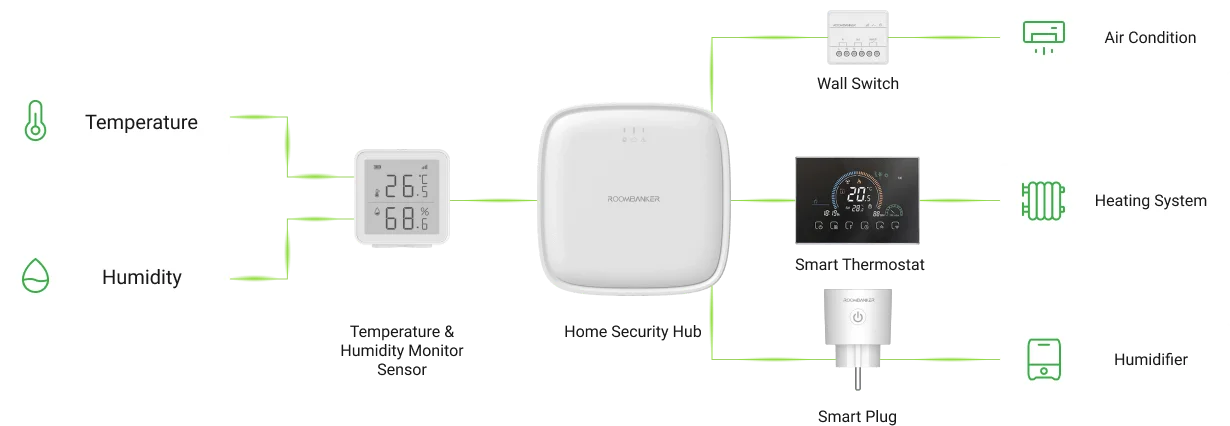
Security Alarm (Intrusion Detection)
This IoT solution is quite extensive because it includes PIR motion sensors with a 12 m detection range and up to 10 kg pet immunity, which is highly practical. Door magnetic sensors cover the doors and windows to detect the first signs of intrusion, while panic buttons enable manual alarm activation to request immediate help.
The system requires control devices like alarm keypads and keyfobs to arm/disarm the system, and alarm sirens (indoor and outdoor) that users can fully configure remotely.
But the most important component is the hub. For this application, it must have multiple backhauls like Ethernet, LTE, and WiFi to provide maximum reliability should one network go down. Our smart hub has these backhauls, as well as a built-in lithium battery that provides up to 8 hours of backup if the power goes off.
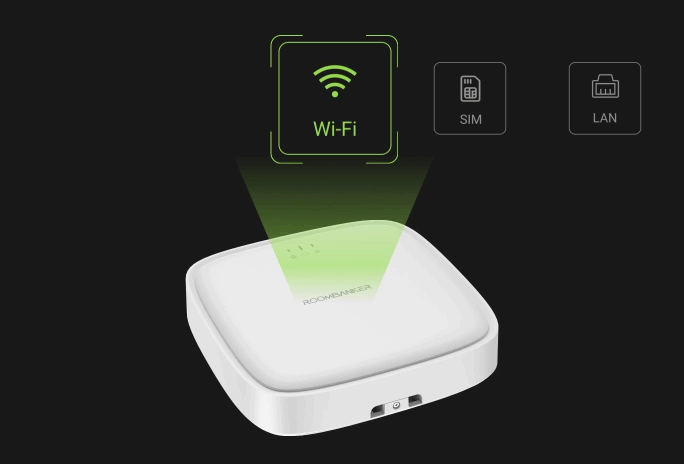
Indoor Environmental Monitoring
Smart homes should also be safe from fires, water leakages, and electrical faults. Our solution provides real-time monitoring of indoor spaces using smoke and water-leak detectors, which can trigger indoor alarm activation and alerts to the user’s phone.
The solution also has remotely controlled relays to cut off the water and gas supplies, and wall switches to shut off the power.
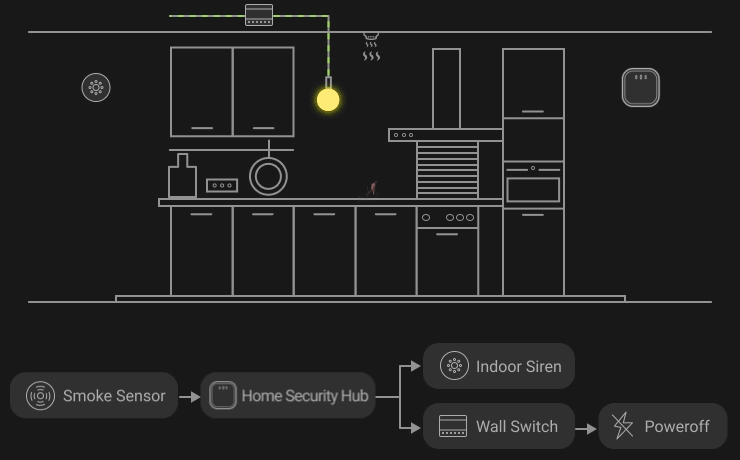
Challenges of Developing Sub-GHz Devices for Proprietary Networks
Complicated Process
Designing and developing a custom, proprietary wireless communication language from scratch is a complicated process that requires hardware expertise. Protocol designers have to understand all aspects of radio communication, which include the PHY layer (for transmission characteristics and regulatory requirements), the packet structure, and parsing to network timing.
Time Intensive Process
Since developing these proprietary wireless protocols is complicated, the process takes time and can delay product launch.
Limited Support
Every technical product that runs on these wireless communication protocols requires technical support over time to be successful in the market. In most cases, the available support is limited, and this can affect an IoT solution’s viability.
How Can Roombanker Help on Sub-GHz Smart Home Applications?
Specialized Protocol Development Team
At Roombanker, we follow the collective vision of a team of professionals with extensive backgrounds and experience in security and home automation to develop our solutions. We use security alarm solutions as our foundation and innovate outward toward several applications, such as energy management, asset tracking, home automation, health monitoring, environmental monitoring, and more.
Therefore, you don’t have to worry about the complicated development process. We prioritize simplicity, convenience, and personalization, so our capable team handles these technicalities to give you ready-to-use products running on proprietary wireless protocols. Using these ready-made devices reduces the time to market.
Ability to Develop Different Sub-GHz Device Types
Our expertise is also evident in our hardware department because we can develop different components for various IoT solutions. These include sensors, relays, switches, and plugs, which run on the proprietary wireless network created by our multiprotocol hubs.
Enhanced Security
Security is a hallmark in proprietary wireless protocols, and we can ensure the hub and its end nodes communicate securely using techniques like FHSS and AES-CCM encryption.
Our RBF proprietary wireless protocol, for instance, uses FHSS (Frequency-Hopping Spread Spectrum) to prevent jamming when an intruder tries to crack the communication using signals from the same frequency. When RBF continuously meets interference during transmission, it switches a different frequency, and it has 50 channels to choose from.
The protocol also employs AES-CCM encryption (with a random key), which collaborates with FHSS to block signal interference, replication, and interception.
Regional Standards Compliance
Governments and regional regulatory bodies often provide wireless standard regulations and guidelines. We take these instructions into account when developing the proprietary protocols to ensure your solution is acceptable and ready to use in your target market.
Available Technical Support
Roombanker offers three support documents for each device, which cover the proprietary wireless protocol they run on. These include product specifications, user manuals, and quick-start guides.
If you’re interested in our products or services and want to use them in your IoT solutions, fill out this form to get started. We can partner if you are a distributor, dealer, security company, integrator, or installer.
Take Away – Difference between RBF Sub-GHz Radios and Other Wireless Technologies
| Comparison Items | RBF | Zigbee | LoRa |
| modulation | DSSS/FSK | DSSS | CSS |
| Standard | IEEE802.15.4 Like MAC | IEEE802.15.4MAC | LoRa WAN |
| Spectrum | Sub-GHz | 2.4GHz | Sub-GHz |
| Speed | 2kbps-1Mbps | 250kpbs | 0.3-50kbps |
| Distance | 3.5 km | 0.1km | 1km-10km |
| Device Access | Random Access + TDMA | Random Access | FDMA Random Access |
| Topology | Star + Mesh | Mesh | Star |
| Power Consumption | Standby Power <2uA | Standby Power Approx. 2uA | Standby Power Approx. 2uA |
| Encryption | AES-CCM + Random Number Key | AES-CCM | AES-128 |
| OTA | Support (Multicast, Background Updates) | Support | Support |
| Pros & Cons | Real-time Downlink Data Transmission in Low-power Mode: 2-second downlink broadcast window with power consumption less than 15uA;FHSS Frequency Hopping: anti-interference and maximize spectrum utilization;TDMA: improve channel utilization;OTA Multicast & Background Transmission: easier and efficient for multi-device firmware updates. | Rich ecosystem;Shorter Transmission Distance: suitable for in-home applications;Extensive Protocol Stack: require more resources and higher costs. | Large Capacity: a gateway chipset has 8 independent channels allowing for FDMA, accommodating extensive connected devices.Spread Spectrum Modulation: high sensitivity, excellent signal-to-noise ratio, good tolerance to frequency deviations or variations in crystal oscillators, and fine adaptability to environmental conditions. |
Roombanker Wireless Security Alarm System combines ease of use with professional-grade features, offering effortless DIY installation and set up while integrating professional-grade features, including advanced detectors, a dedicated security hub, and supporting integration with Alarm Receiving Centres, etc, making it the go-to choice for a reliable wireless security alarm system, supporting intrusion alarm, fire & water leak alarm, panic alarm, etc., serving an array of small business and residential properties.
